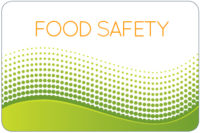As we pass the halfway point of 2022, we would like to commend the meat and poultry processing industry for a continued job well done. As we have been fortunate to report for several years, we continue to see encouraging trends in the meat industry as it relates to foodborne illness outbreaks and recalls.
So far, in 2022, there have only been two recalls of meat and poultry products announced by industry for the suspected presence of pathogens. The total amount of product affected has been less than 30,000 pounds. Considering that, a decade ago, it was not uncommon to see more than 100 million pounds of meat and poultry products recalled for pathogens, the low numbers so far this year are quite impressive.
One of the things that has always impressed me is the meat industry’s unwavering desire to continually improve the overall safety of its products. And, though we are not yet perfect, it is becoming increasingly difficult for food scientists and others to identify harvest and processing improvements that would offer further meaningful improvement. So, what other things can we collectively do to help further reduce the occurrence of foodborne illness?
In my mind, enhancing consumer education remains a critical area where we can continue to make meaningful change. Last year, the National Cattleman’s Beef Association published a report detailing some of the areas where consumer food safety education could be improved. The findings were quite interesting.
According to the report, only about 20% of consumers are concerned with foodborne illness and food poisoning when cooking at home. By contrast, 32% identified overcooking as a concern. Similarly, taste, quality and preparation time were of significantly more concern than food safety. This is probably not a function of consumers behaving recklessly or “not caring” about food safety. Rather, it is likely a function of consumers believing that the products they purchase at the grocery store are inherently safe and free of any pathogens, despite the fact that they are raw animal products.
Ironically, these consumer views are likely a product of the industry’s remarkable success in combatting foodborne illness at the processing level. Indeed, foodborne illness has become uncommon to the point that consumers rarely regard it as a pertinent risk. If the industry continues its efforts aimed at consumer education and engagement in the realm of preventing foodborne illness, it is likely we will yet further reduce the number of recalls and illnesses.
As we head into the second half of 2022, keep up the great work!





Report Abusive Comment